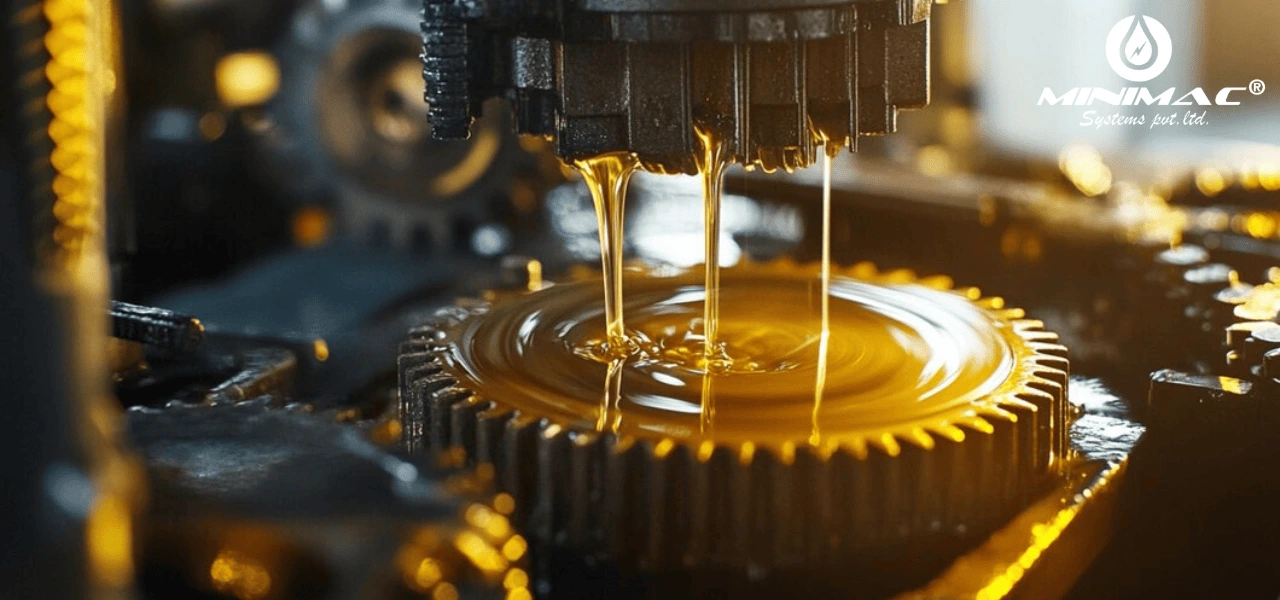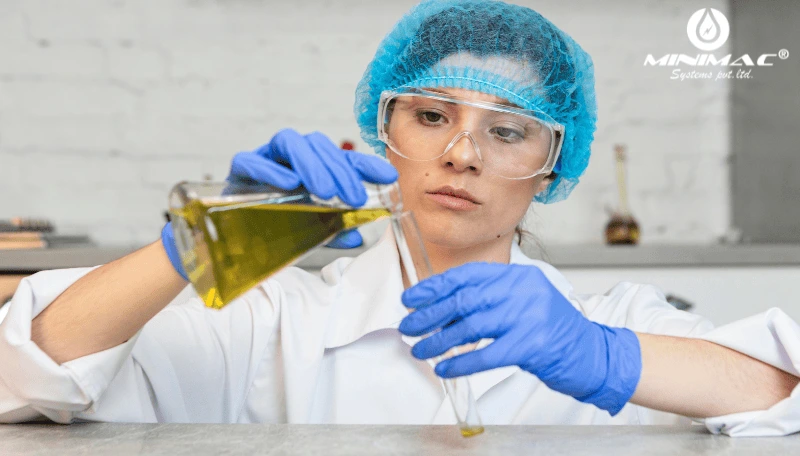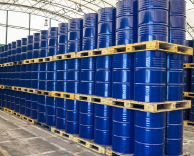How to Maintain Lubricant Viscosity for Optimal Machinery Performance
Introduction to Lubrication Viscosity
Viscosity of lubricants refers to the resistance of lubricant flow. It measures how effectively the oil can act as a barrier between moving parts, minimising friction and wear. The inherent viscosity of an oil or grease is vital to the smooth operation of equipment and the performance characteristics for a multitude of industrial applications. Lubricants come in several different viscosity grades. Hydraulic Oil Viscosity is integral for efficient energy transfer in hydraulic systems, while Gear Oil Viscosity is used to provide optimized load sharing with minimum wear for heavily loaded gears. Without Viscosity, oil loses the ability to create a lubricating film, leading to metal-to-metal contact, increased wear, higher friction, and more heat, resulting in eventual catastrophic failure.

Why Viscosity Maintenance is Crucial
It is important to ensure proper Lubricant Viscosity for reasons like:
- Stop lubricants from breaking down: Contamination, heat, and oxidation all cause lubricants to break down and lose their Viscosity And damage properties.
- Reduced Friction and Wear: The oil viscosity is correct, which keeps moving parts properly lubricated, protecting a machine's components from contact as they move.
- Improves Energy Efficiency: Proper Hydraulic Oil Viscosity for efficient power use in hydraulic systems and correct Gear Oil Viscosity to reduce energy loss due to gear drag.
- Extend Oil Change Intervals: Monitoring of Oil viscosity and necessary rectification methods can help in extending Oil Change Intervals and lower operational costs.
Viscosity Loss, from contamination or oxidation, means the lubricant can no longer protect the equipment = early failure and lots of $ Downtime!
Factors Leading to Viscosity Degradation
Viscosity Degradation and Oil Breakdown are caused by various environmental and operational factors, as indicated below, and Yuken now addresses them. Knowing these challenges can help avoid the problems requiring performance.
1. Temperature Fluctuations
- At the same time, high-temperature oil becomes thin and less capable of carrying a load. This is especially important in the case of Hydraulic Oil Viscosity, as hydraulic systems depend on the stability of viscosity for accurate operation.
- At the other end of the temperature spectrum, very cold conditions can cause lubricants to thicken, losing fluidity and potentially consuming more energy.
2. Contamination
- Contaminated water creates emulsification that depletes the molecular structure of the lubricant and accelerates Viscosity Degradation.
- Dirt, metal shavings, and other particulates interfere with the ideal interaction between an oil’s Viscosity and the surfaces it lubricates, which translates to more wear.
- Engine fuel dilution is a common problem occurring in engines, leading to Lubricant Breakdown with a viscosity decrease.
3. Mechanical Shear
- In high-pressure applications (such as in gearboxes and hydraulic systems), lubricants are subjected to severe mechanical forces. The shearing action resulting from time causes the viscosity loss, which results in the lubricant becoming ineffective at protecting.
4. Additive Depletion
- There are special additives in many lubricants that will keep the Oil Viscosity, but eventually these additives wear out. This is why keeping tabs on the condition of a lubricant through Oil Analysis is so important for maintaining performance.s: Keep an eye on the condition of a lubricant through Oil Analysis, which is important for keeping performance.

Best Practices for Preventing Viscosity Loss
Here are some best practices to ensure stable Lubricant Viscosity:
1. Selecting Appropriate Lubricant for your Application
- Select suitable lubricants in the correct Hydraulic Oil Viscosity to suit the pressure and temperature conditions of your systems.
- Choosing the proper Gear Oil Viscosity avoids overload situations that can cause wear.
2. Control Operating Temperature
- Implement Cooling Systems to Protect: Overheating lubricants is also a cause of lubricant degradation.
- Provide proper insulation in cold conditions to maintain Oil Viscosity stability.
- Employ a synthetic lubricant with a high Viscosity Index so that it stays consistent in the face of a large temperature range.
3. Prevent Contamination
- Use of higher filtration systems to separate particles and water from the lubricant.
- Avoid exposure of lubricants to dust and humidity by storing them in closed containers.
- Monitor the condition of oil by Oil Analysis to detect contamination.
4. Optimize Oil Change Intervals
- Change Oil Only at Data-based Intervals instead of a Timetable
- Perform periodic Oil Analysis and use as determining factors if the lubricant is still doing its job.
- Buy Oil Change Extension using high-quality performance oils and Viscosity Improvers
Know More About Viscosity - Click Here.
The Role of Viscosity Improvers in Maintaining Stability
Viscosity improvers are chemical additives added to lubricants to sustain the lubricant's viscosity over a broad temperature range. They are especially helpful in applications that demand extreme temperature changes.
How Viscosity Improvers Help:
- They also retain lubricants from thinning at elevated temperatures, helping keep Lubricant Viscosity stable.
- They prevent over-thickening in cold temperatures, which is essential for keeping Oil Viscosity in check.
- They improve overall lubricant durability, thus contributing to resisting Viscosity Loss.
Replacing Viscosity Improvers regularly can sustain and maintain Oil Viscosity, resulting in improved Oil Change Interval and thereby reducing lubricant consumption and total operating costs.
Oil Analysis & Oil Monitoring Advantages
One of the best methods for monitoring both Viscosity Loss and determining the initial stages of Oil Breakdown is through Oil Analysis. Regular Oil Analysis allows for the identification of potential problems before drastic measures need to be taken in the form of machinery failure.
Key Oil Analysis Tests:
- Kinematic viscosity test: Indicates the ease with which the lubricant flows under standard conditions.
- Viscosity Index: Assesses the ability of a lubricant to retain its viscosity when subjected to varying temperatures.
- Contaminants Analysis: It identifies the contaminants, like water, dirt, and fuel, responsible for Viscosity Degradation.
Oil Analysis is a well-known servicing tool that, when included in a preventive maintenance program, can fine-tune Oil Change Intervals, avert Lubricant Breakdown , and ensure expanded machinery running hours.
Conclusion
Keep Lubricant Viscosity Maintaining to the Maximum to Keep Machine Efficiency, Reduces Wear and Prevents Viscosity Loss It is possible to reduce the Viscosity Degradation and achieving longer Oil Change Intervals in various Industries by scrutinizing the Viscosity degradation on selection of lubricants, preventing contamination as far as possible by adding Viscosity Improvers and regular Oil Analysis.
Learn more about our services and industry insights by visiting our official LinkedIn page: Minimac Systems
FAQs:
- Viscometers: including kinematic viscometers, rotational viscometers and capillary viscometers measure a lubricant's ease of flow, or as it is often called, its viscosity.
- Determination of V/V (Kinematic Viscosity Test): : A test to determine the viscosity of a fluid by measuring the time it takes for a given volume of the fluid to flow through a capillary under gravity.
- Saybolt Universal Viscometer (SUV):Measures the time it takes oil to flow through a precisely sized orifice.
- Brookfield Viscometer: Measurement of resistance to flow by rotation of a spindle to calculate viscosity.
- You can add viscosity improvers: There are special additives that allow an oil to remain viscous at different temperatures.
- A Higher Viscosity Grade of Oil Switching to a higher viscosity base oil.
- Minimizing Pollutants: : Elimination of water, fuel, and solvents that mix with the oil.
- Lowering Operating Temperature: Viscosity tends to drop with too much heat; coolers or synthetic oils reduce the temperature.
- Density is mass divided by volume; viscosity is the resistance to flow.
- More viscous fluids are usually denser ones, although they don't have to be.
- Oil Viscosity is more influenced by temperature and additives than by density.
Switch to Lower Viscosity Grade Oil: Utilizing a lubricant with a lower base viscosity to lower the resistance to flow.
- Include Diluents: Some compositions include thinning agents.
- Raise Operating Temps: The heating oil is less viscous, flows better.
- Use Synthetic Oils: Some synthetics flow far more readily at cold temperatures.
- Use Synthetic Lubricants: Some synthetics have better fluidity at lower viscosities.
- It is the lube that minimizes wear and friction.
- It inhibits Oil Breakdown and Viscosity, which extends the life of the lubricant.
- Features: The Hydraulic Oil Viscosity is optimized for better energy transfer.
- Keeps Gear Oil Viscosity for smooth operation and lubrication of gears and bearings.
- Viscosity drops, which means that the oil is thinner and flows more readily.
- This may cause Viscosity Loss, such that lubrication performance is lowered.
- Viscosity Degradation is facilitated by elevated temperatures and may result in Oil Breakdown.
- Kinematic Viscosity Test: Determines how easily oil flows through a capillary tube at a given temperature.
- Brookfield Viscometer Test: Measures dynamic viscosity by spinning a spindle in the oil.
- Redwood viscometer: Measures the time that a set volume of oil takes to flow through an orifice.
- ASTM Viscosity Testing: By utilizing specific tests such as ASTM D445, accurate viscosity readings are obtained.





